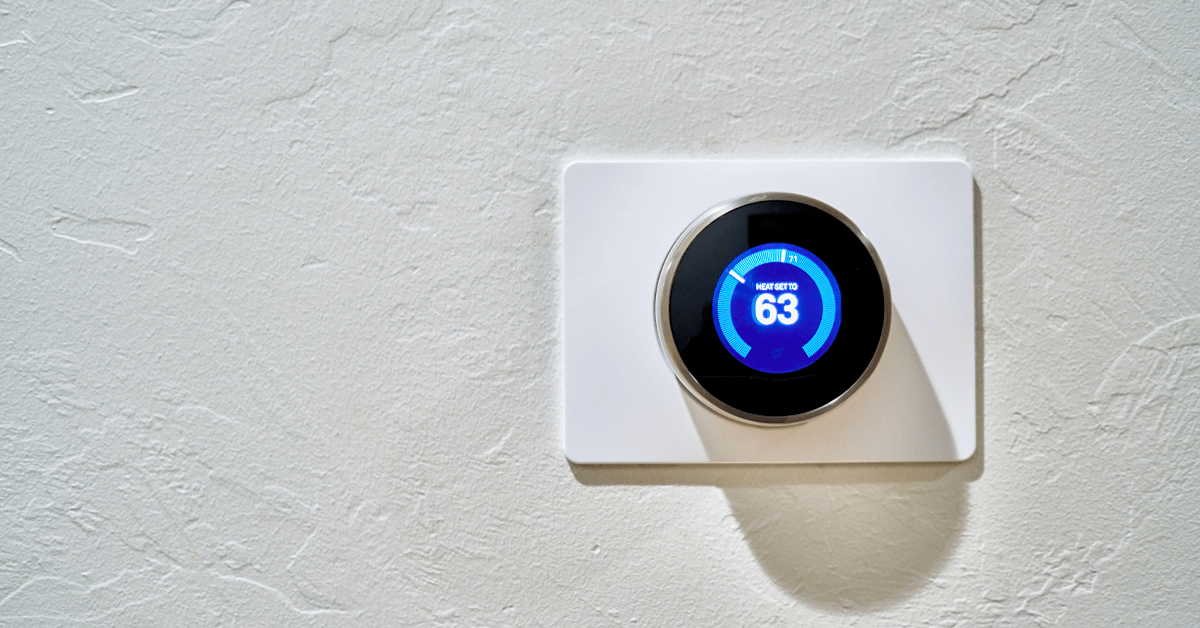The Smart HVAC Systems and Products You Need to Start Offering
By My Service Depot on Monday, December 14, 2020Start offering and installing these smart HVAC systems—before your competitors do.
We’ve all seen those futuristic, sci-fi movie scenes where someone wakes up and their home tells them their plans for the day, makes their coffee, and prepares their breakfast. A lot of those advancements may seem like pie-in-the-sky fantasies, but with the popularization of smart home products (Alexa, Google Assistant, and Siri) some of that stuff already exists. As an HVAC professional, you have an opportunity to offer some unique smart home integrations for your customers. You’ve probably already heard of smart thermostats like Nest, but other recent innovations give homeowners even more control.
Let’s take a look at what’s out there!
Smart Thermostats
As an HVAC professional, customers may have asked you to install products like Nest before. These give consumers better home-control and provide a more efficient HVAC experience. Linking to a homeowner’s mobile device, they can even allow remote control and send automated notifications regarding the system’s status. Smart thermostats will likely be the first products you introduce for smart home utilization, so do some reading on basic functionality as well as the connectivity that customers may look for with these products.
Smart Vents
Now that you have the basics of a smart home going, we’ll look at a product that pushes things to the next level. You may have heard the story of how Bill Gates’ home will adjust a room’s temperature based on his preferences, but such features are no longer reserved for billionaires. With smart vents, customers can control individual room temperatures and develop an ecosystem that accommodates their needs. Two of the bigger products on the market are Keen and Flair, which provide a lot of control.
Given that homes will have at least one vent per room, you’ll need a way to track these to provide future service. Smart Service HVAC software provides an in-depth equipment tracking system. The ability to accurately note locations, warranties, and service records for installed equipment will become crucial for customers with sophisticated, smart systems.
Smart Blinds
One of the biggest areas of HVAC energy efficiency in a home? The windows. Poor energy efficiency as well as sunlight naturally heating a home are factors here. Your clients may not know the effectiveness of closing/opening blinds, or may not want to bother doing so at several points in a given day.
Smart blinds allow customers to set automated routines (matching up with their existing heating/cooling cycles) to let the sunlight in, or to block it off when needed. An additional benefit you can bring up to clients is the added home security you get when pairing these with smart lights. The automation can make it appear like someone is home at all times, which will serve as a great deterrent for criminals looking for vacant homes during the holidays.
Smart Humidifiers
With winter coming, in-house humidity drops (with cold air unable to retain moisture). Dry air makes rooms feel colder and makes your lips crack. Your customers probably already use a humidifier in their home, so why not offer an additional integration to their smart home products?
Smart humidifiers give clients more control and information over the humidity in their rooms. Allowing customers to set schedules or adjust settings according to thermostat usage gives them more power to make a space truly comfortable.
IoT and IFTTT
You may have heard of IoT (Internet of Things) before, but another step along this path would be the integration of IFTT. IFTT (short for If This Than That) allows you to trigger events based off actions or hardware you have installed. The terminology gets pretty technical, but the technology allows you to do some really cool stuff for your clients:
- Automatically generate reports based on the times the HVAC unit is running. Or, take things a step further, and generate wattage calculations to give clients real data on how their system functions.
- Air flow sensors can be wired to send notifications in the case of poor airflow or even failure. You can even make it so these notifications go to you too, allowing you to quickly schedule service when something goes wrong.
- Door sensors paired up with Nest or smart vents allows airflow to get directed to more populated areas for more efficient system usage.
Final Thoughts
Check out the integrations you can come up with for the existing products you carry. Then, consider expanding out to see how you can really utilize smart home features for your clients. You may find yourself in a unique market to offer packages with better features and care than your competitors.
With tech becoming more and more prevalent in everyday life, we may all soon live in a sci-fi home with AI helping us cook our morning breakfast. But, for now, these cool products can get us started in that direction.


